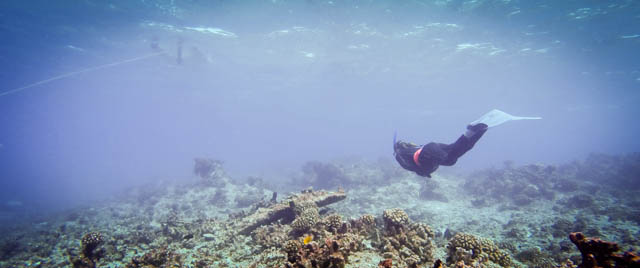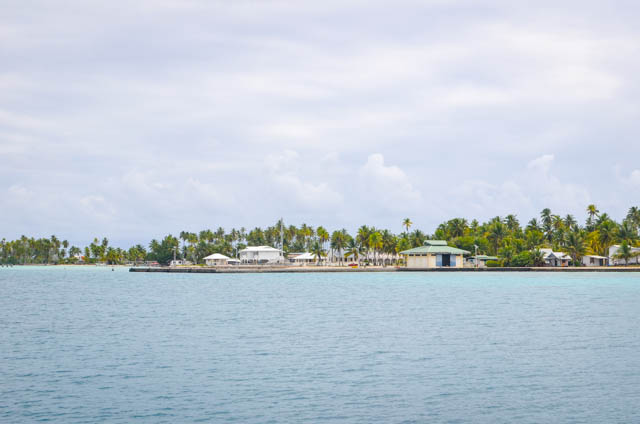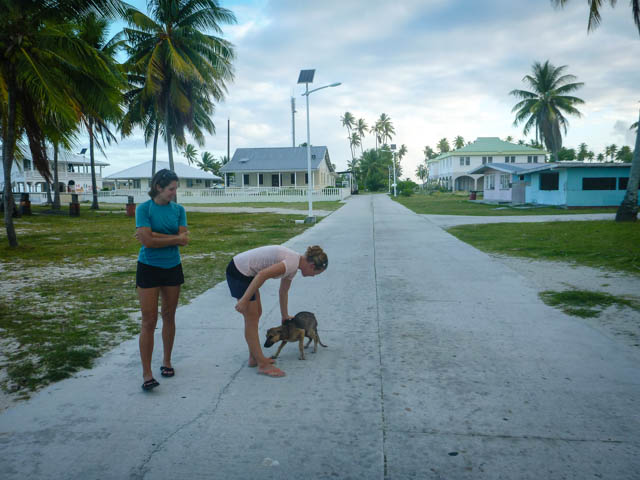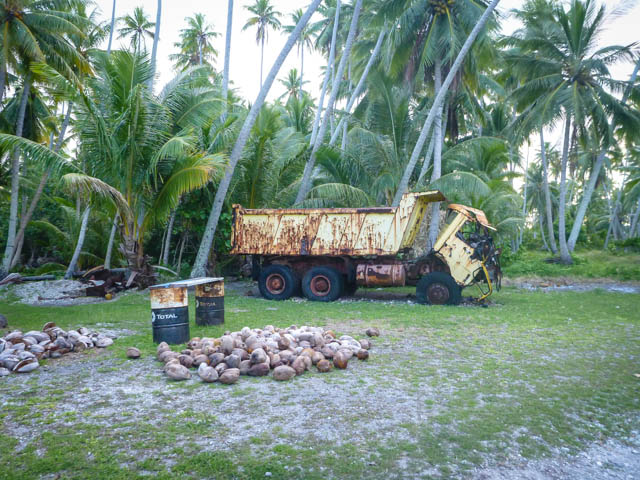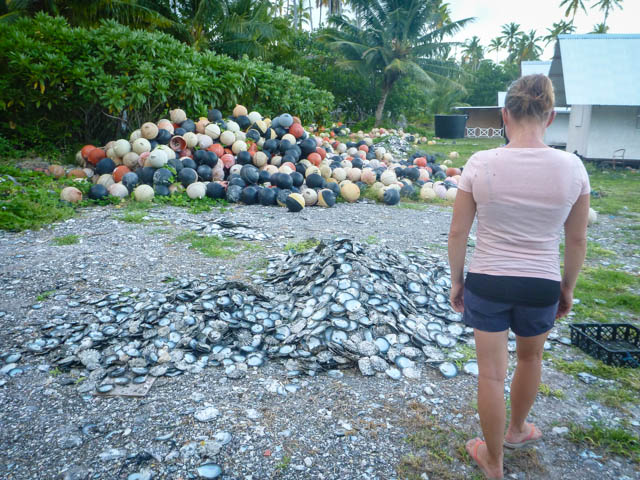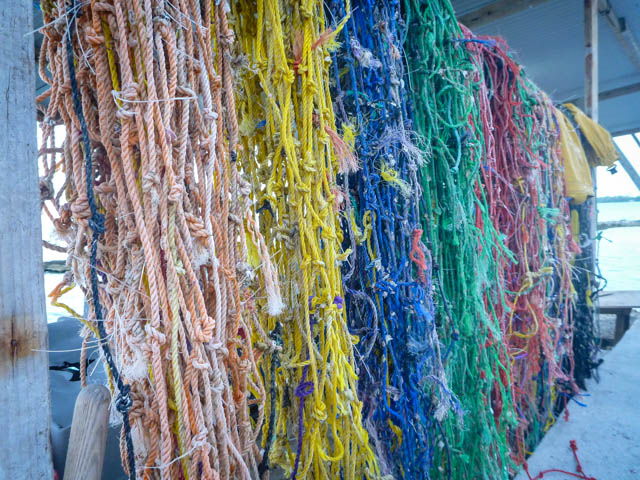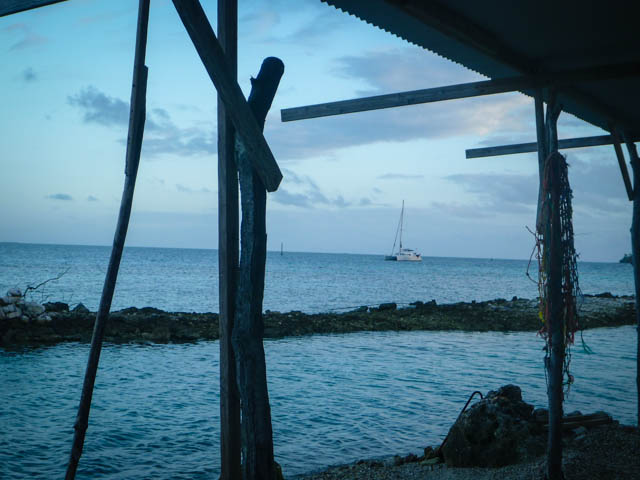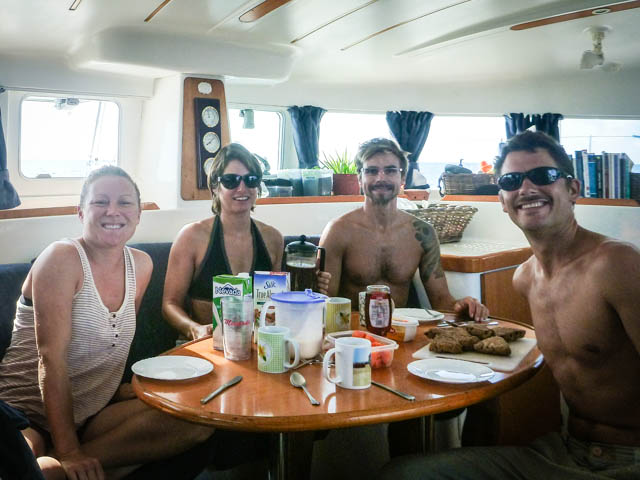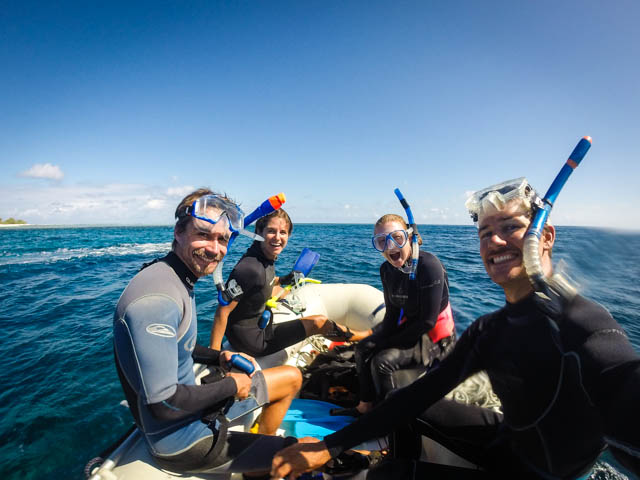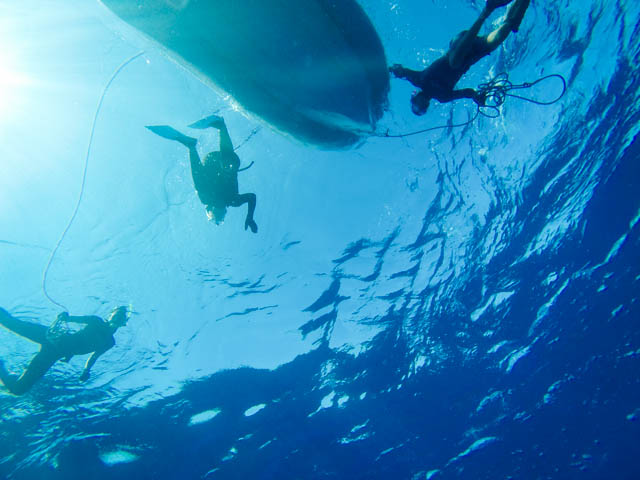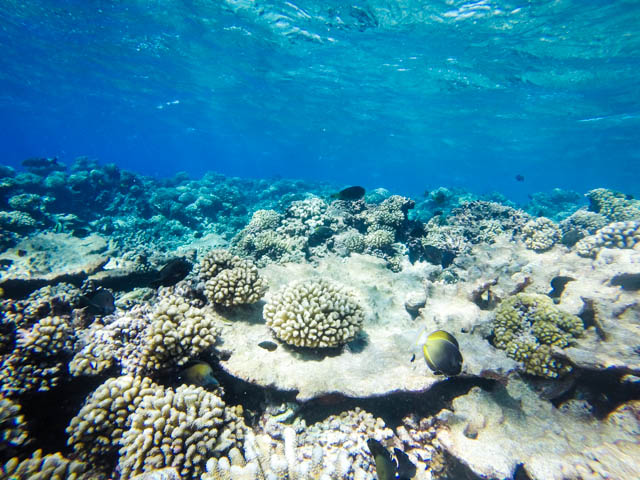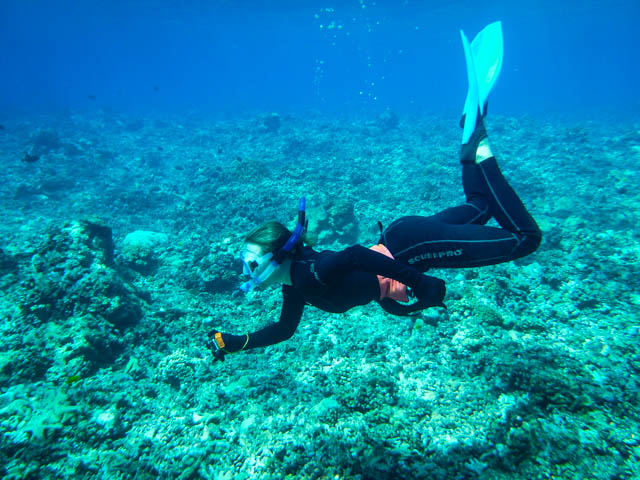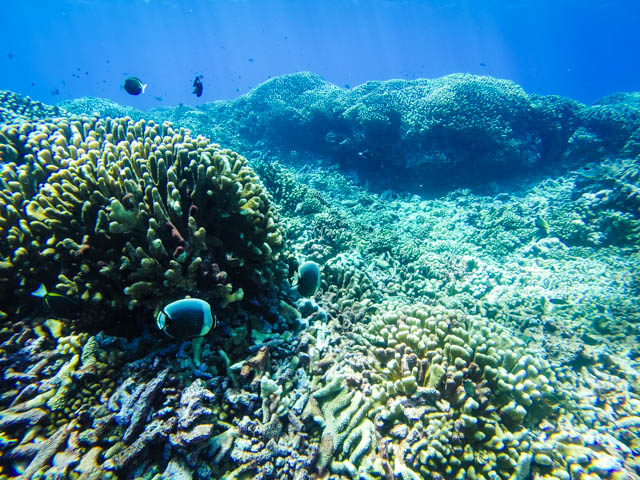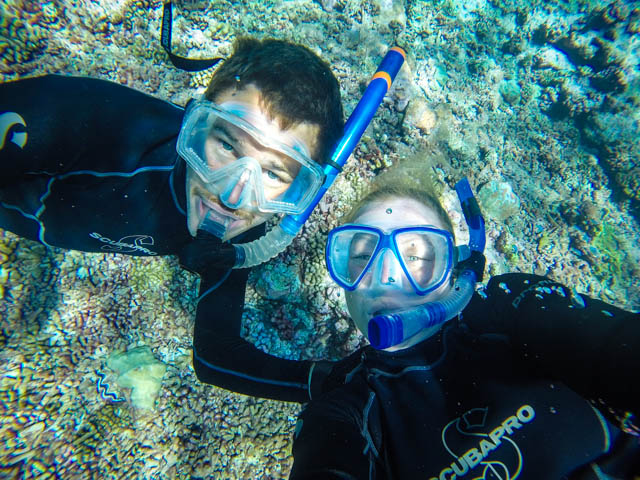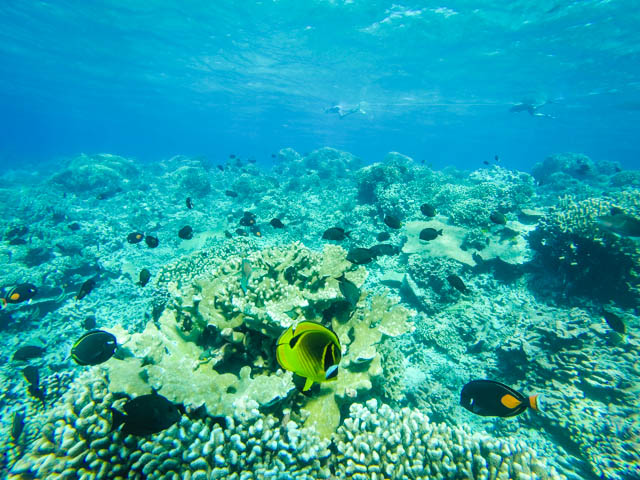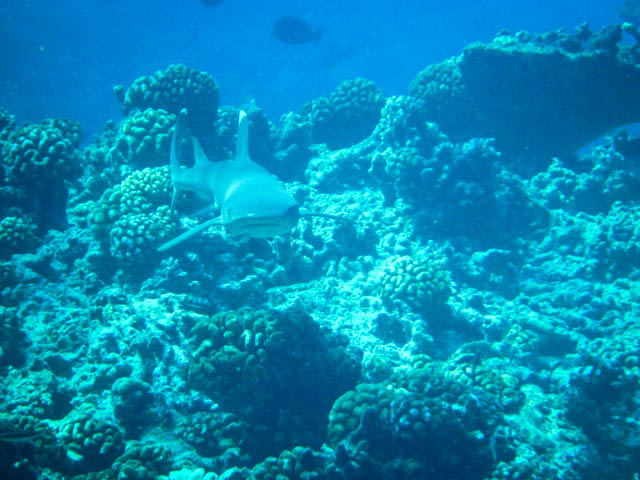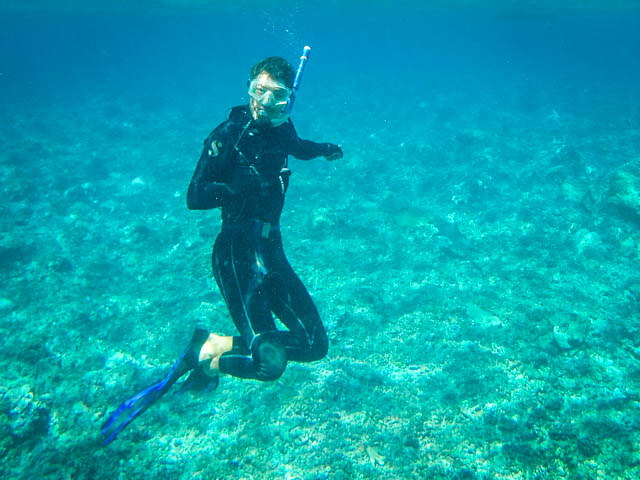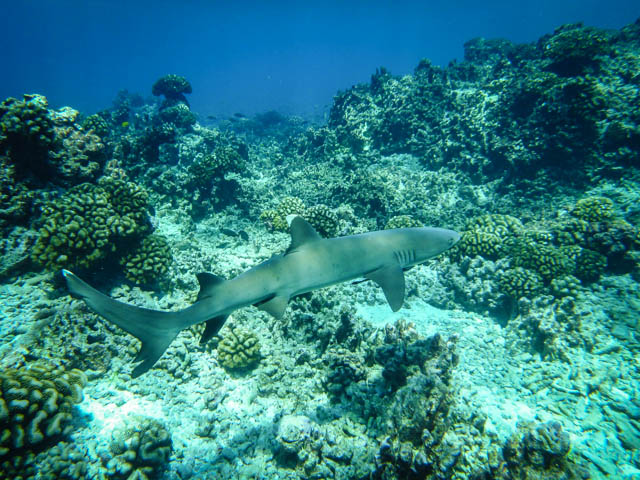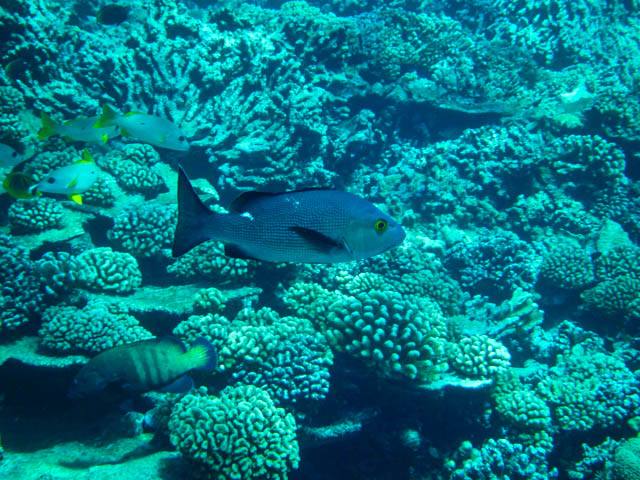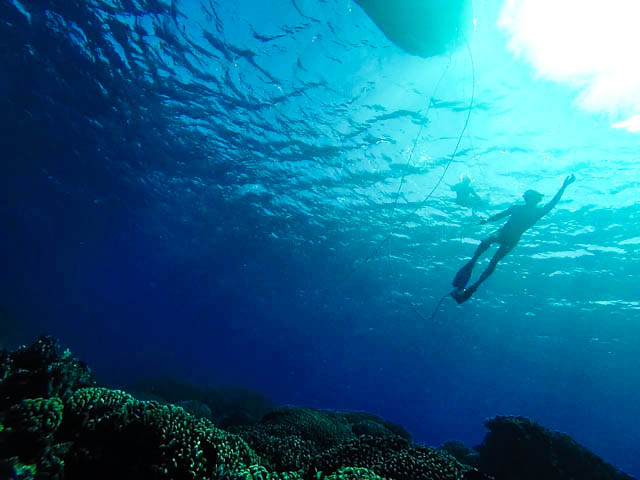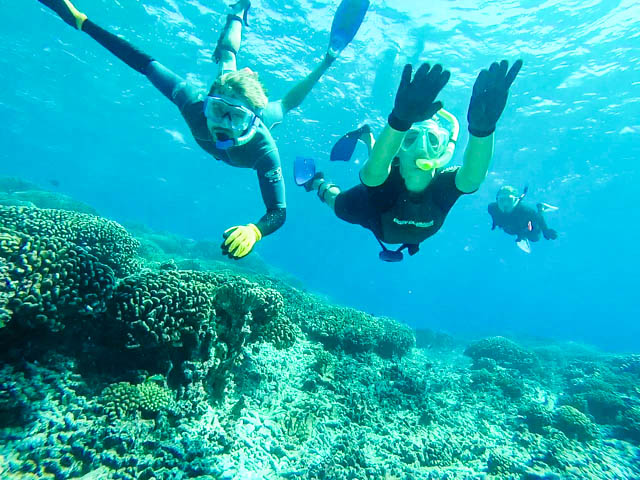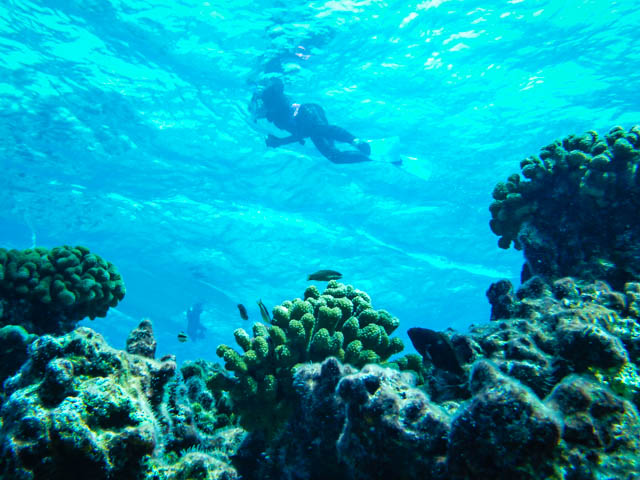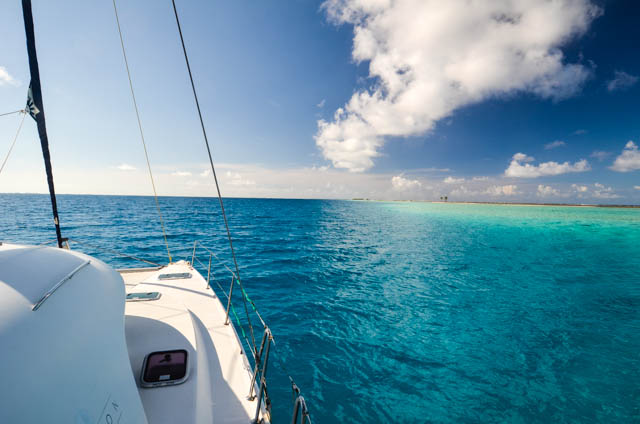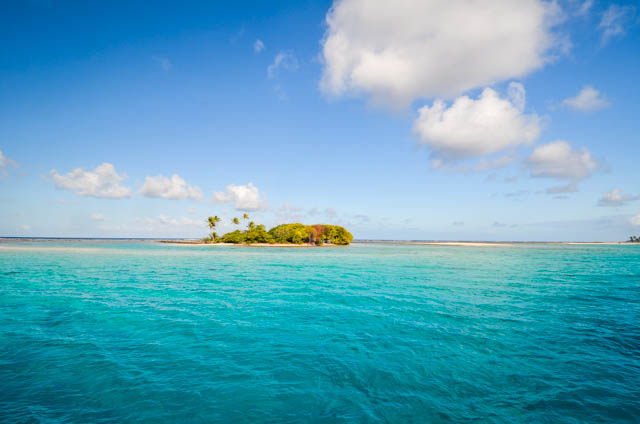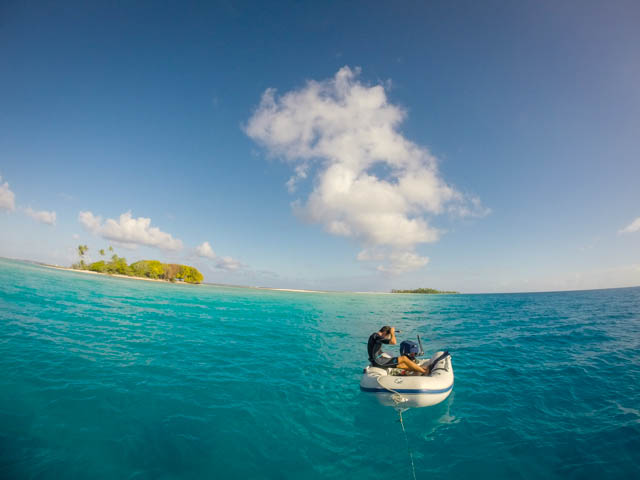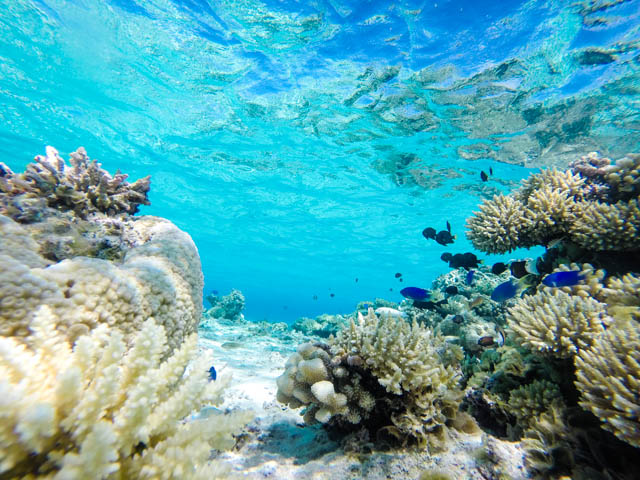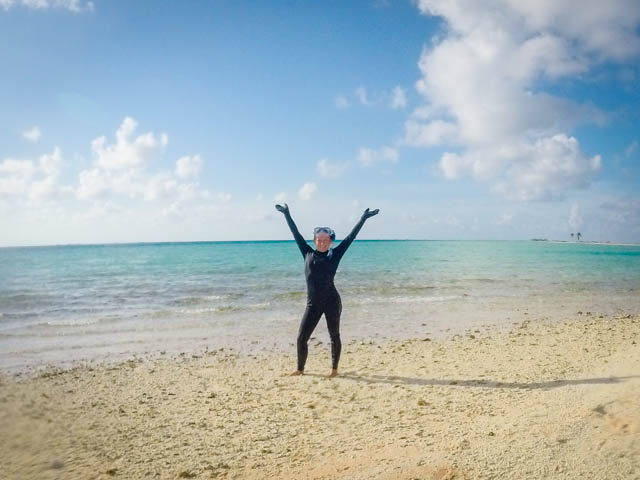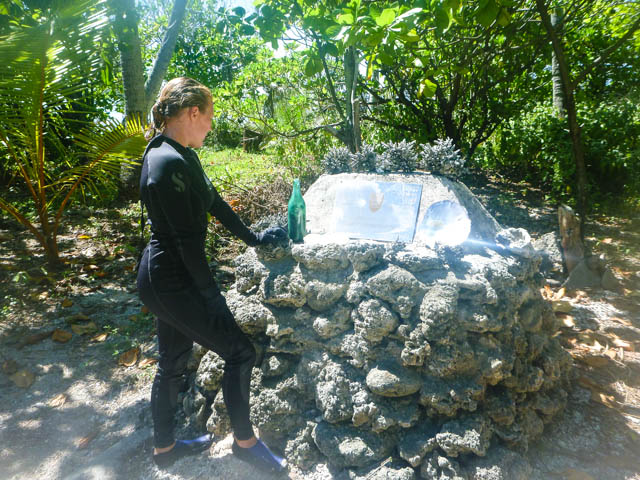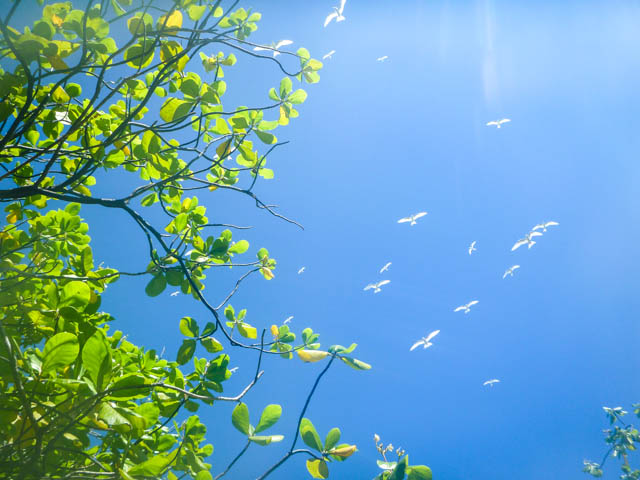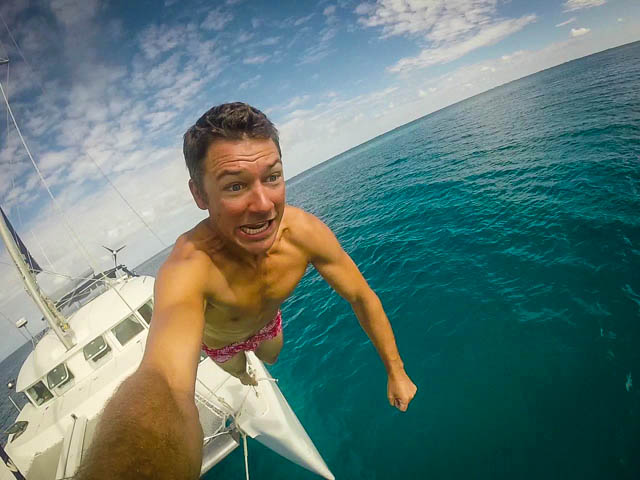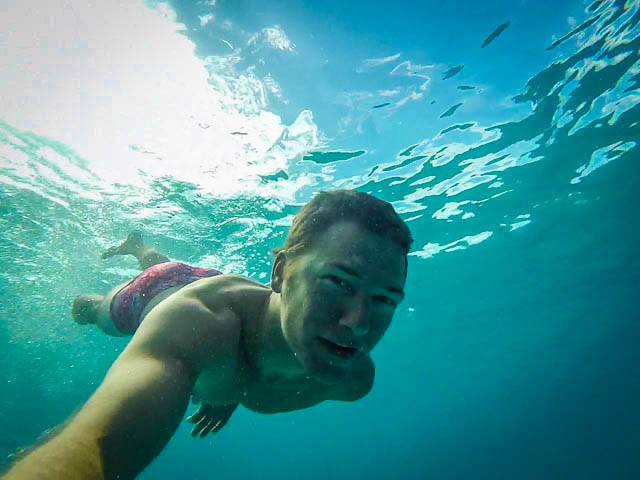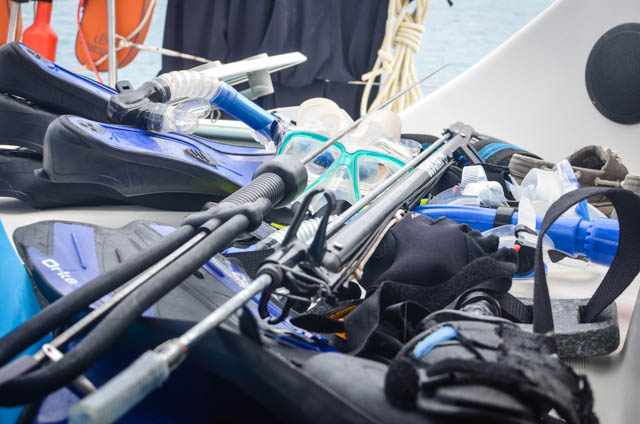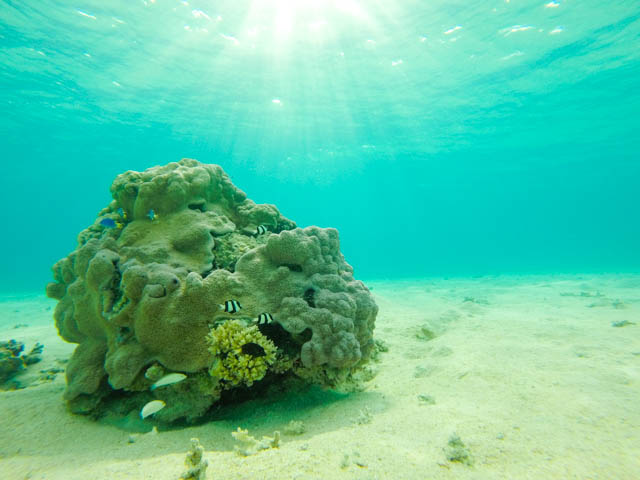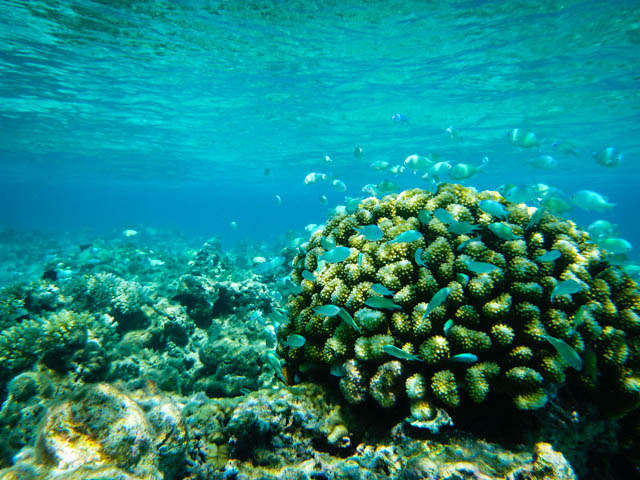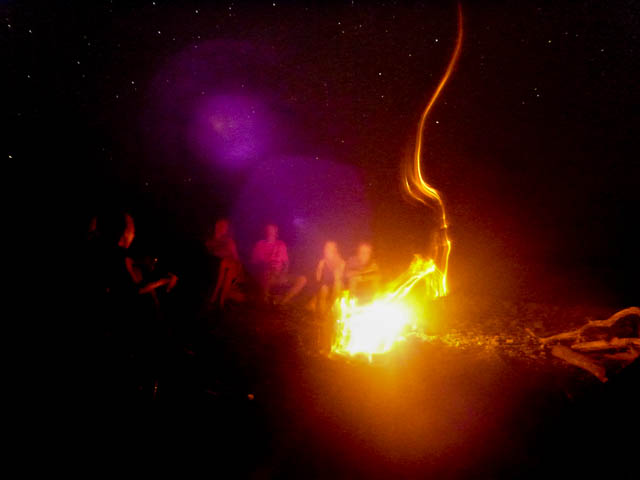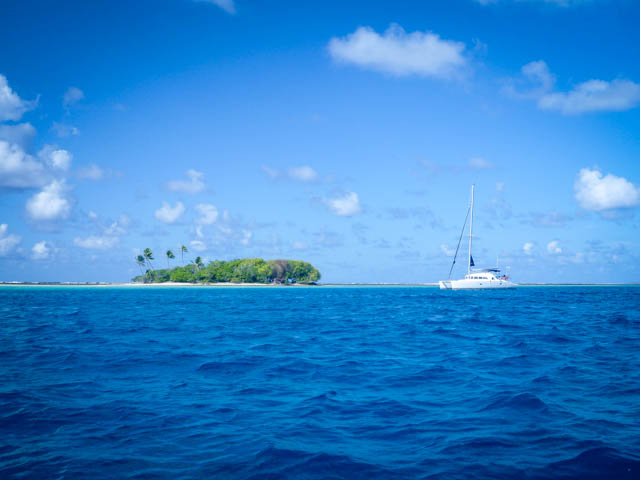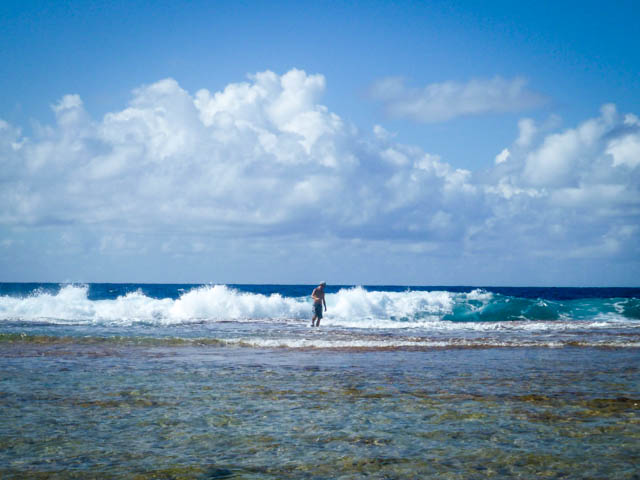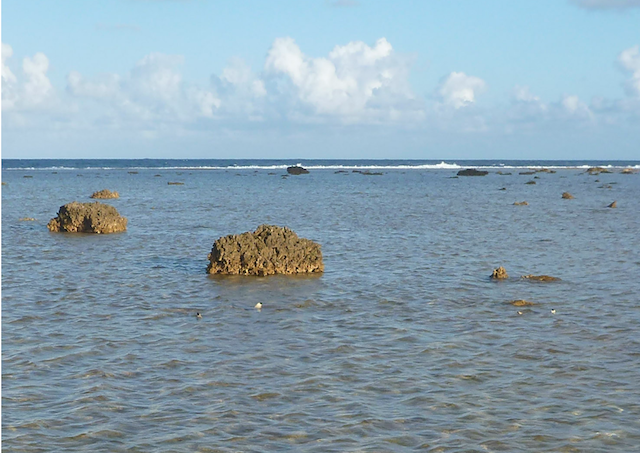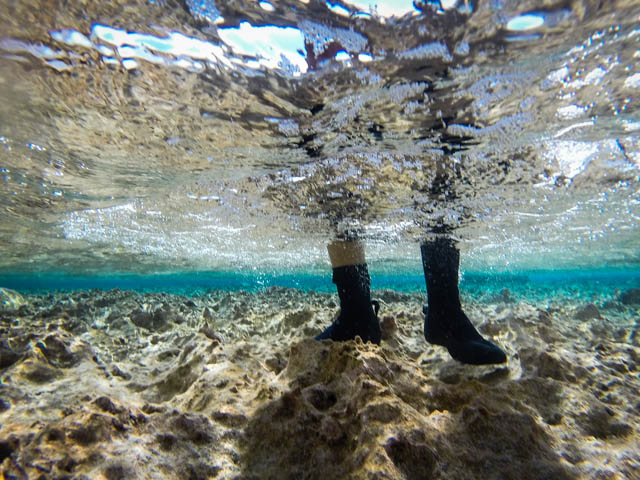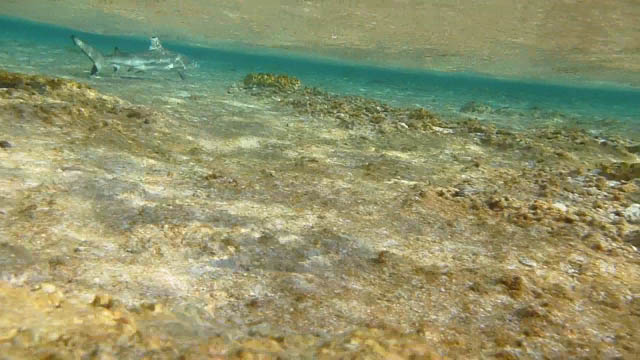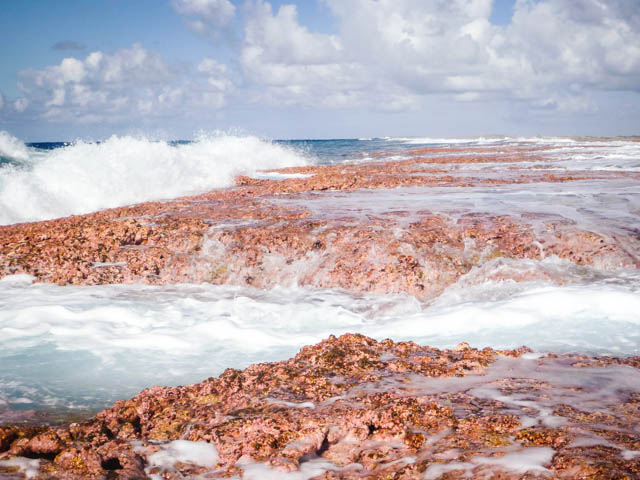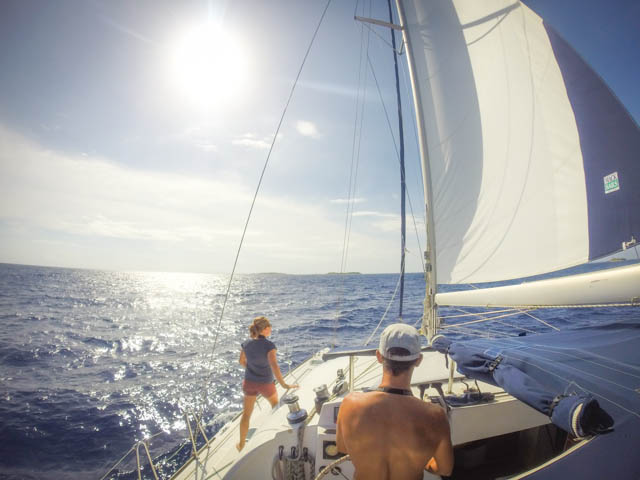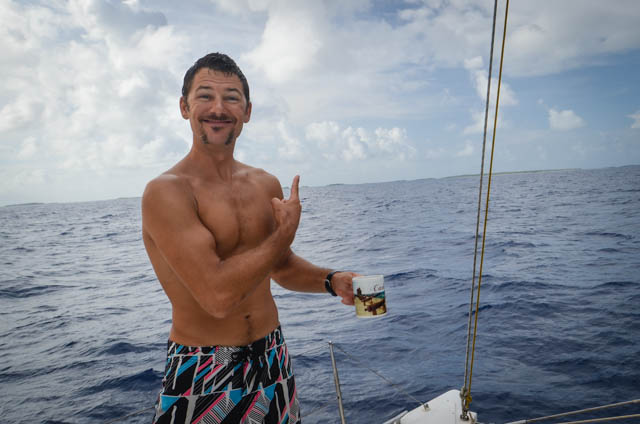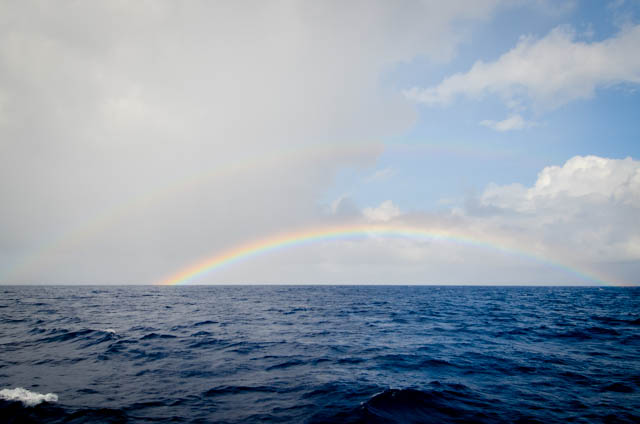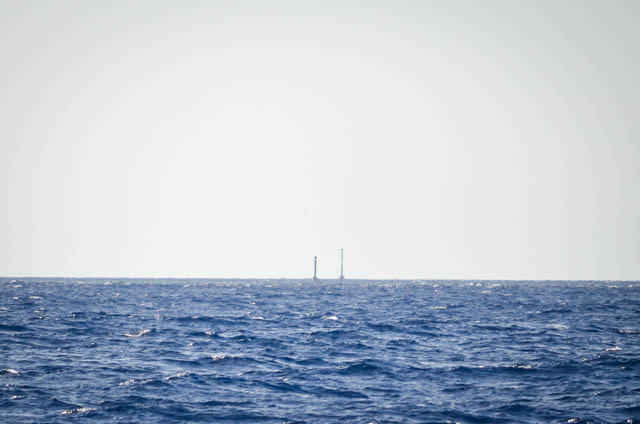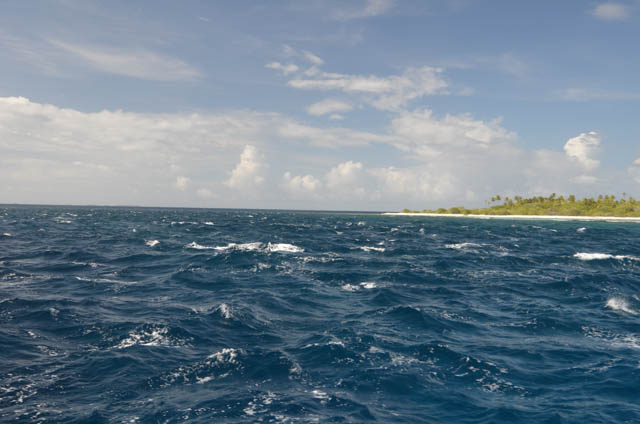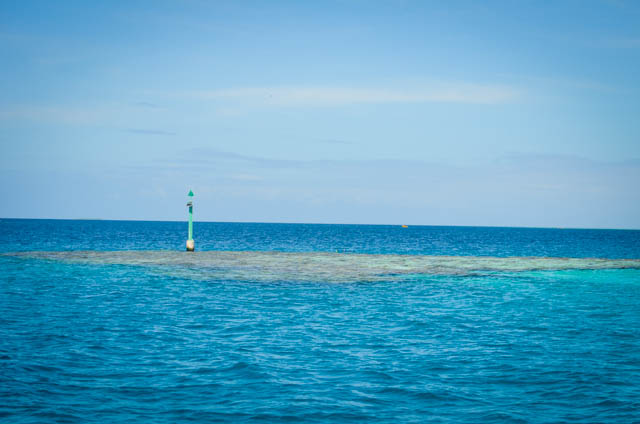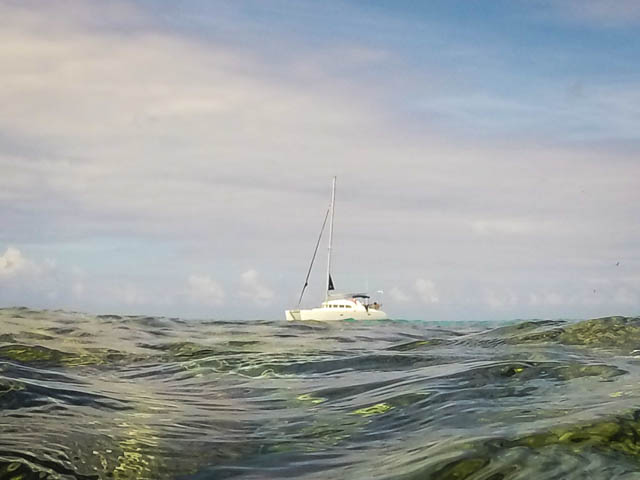Author: Pete
Location: Passage Raroia to Makemo
Date: May 15 – 17
Sailed back from the western chain of motu in great morning sun and anchored just north of the pass on an uninhabited islet. We took advantage of the turning tide and went out for another amazing drift snorkel in the pass, then I foraged around the islet. Came home with a couple coconuts and a oyster net buoy that I’ll use as a float.
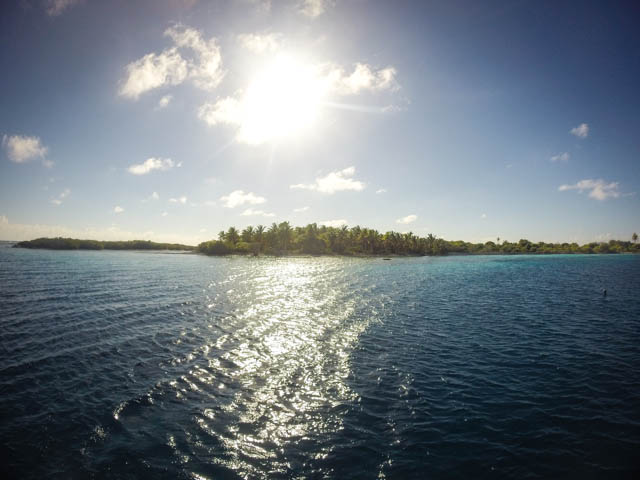
The 16th saw us waiting for the slack tide at 3:15PM. We were a little sharked out by then, so Liza and Felix explored the islet. Meanwhile, I went on a repair spree and fixed the 120V inverter, two 12V oulets, and a exhaust hose. A hole was worn through the aging hose and it was spewing exhaust water into the port engine compartment when the diesel was running. The water was vented to the bilge and the pumps were kicking on more frequently than normal when we were motoring. Some plastic, vulcanizing tape, an a little duct-tape on the top just for good measure, and we’re back in action, at least until I can replace it in Tahiti.
After the repair fest, I jumped in to check the anchor and found it pretty terribly tangled in a mess of coral. The anchor was sitting happily in the sand, but the boat was hung up almost directly about the coral head, the chain wrapped tightly under and around a mushroom-shaped dome. Bad news. It came down to a team effort getting us free. Miranda let more chain out to give the boat some wiggle room. Felix towed the boat forward with the dinghy to give the chain some slack, and I swam the 17 meters down to the coral head and tried to pull the chain out from the crevices, then up and over the 6 foot coral heads, and deposit it in the sand on the other side. It took me about 6 dives to get it, each time I’d run out of breath, the boat would pull back tight on the chain in the wind, and we’d have to do it again. This was probably my limit for working at depth and each time I came up it didn’t seem fast enough. I ended up with my hand inadvertently on the clasp of my weight belt. Good practice though. As if 17 meters wasn’t a pain enough, half way through our rigmarole a couple sharks showed up and loitered for a while. We are researching floating the chain next time.
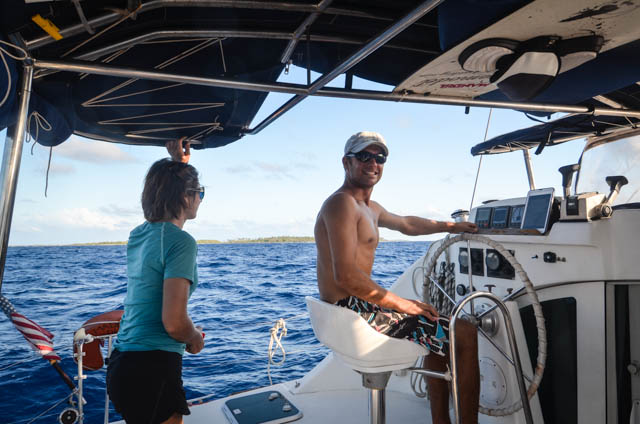
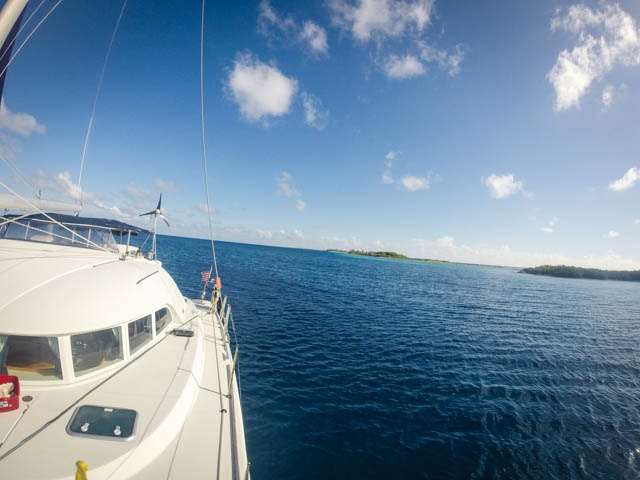
After a nap and a little lunch we motored out the calm pass with the main up. Back in the open water we unfurled the jib and took off at a nice 6.5 knots heading southwest towards Makemo, our next atoll in the Tuamotus with an easy pass. A couple miles out a dark, ominous shadow slipped past Tayrona’s starboard hull. It looked like a really big shark to me until it jumped out of the water. It was a ten foot long porpoise, dark with some white blotches. Another showed up and they played in our bow wake for a while, showing off, jumping and swimming belly up just under our bows. It’s a good omen, I hope.
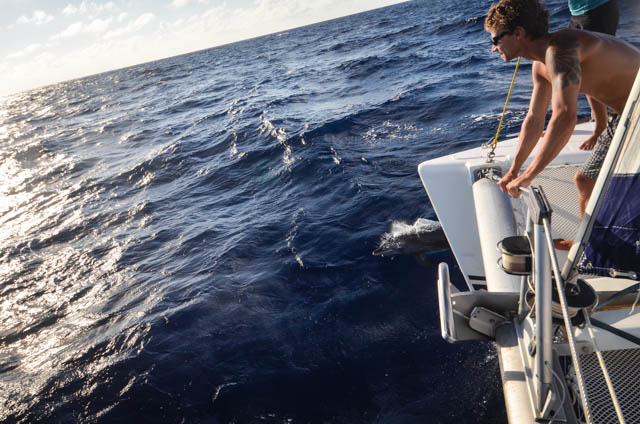
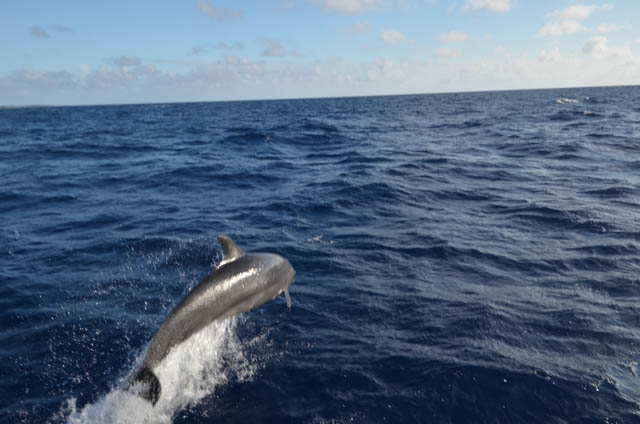
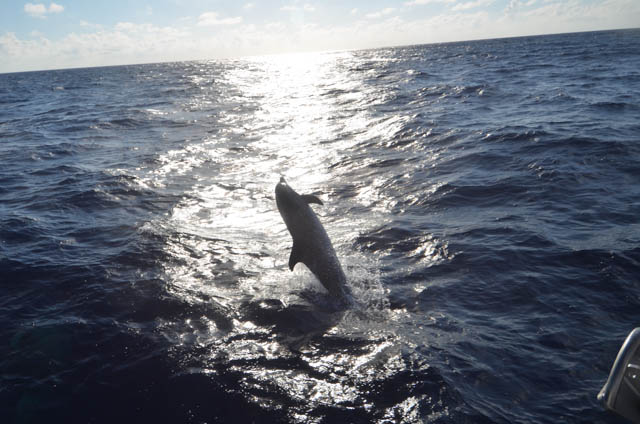
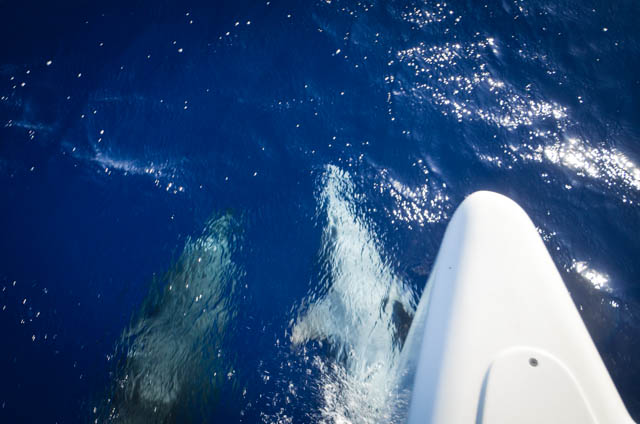
Then it was sunset and in no time we were out of sight of the low atoll and back to the open sea. Huzzah! The dark crept in as we made dinner and ate under the canopy of a moonless starry sky. Went to bed around 7PM, woke at 2AM for our turn around the atoll Taenga, a passless, uninviting coral berm. It was out there hiding in the dark, and with no moon it was a little disconcerting to know it was lurking four miles off our port. We lit it up with radar and the low islands showed up clearly out of the darkness.
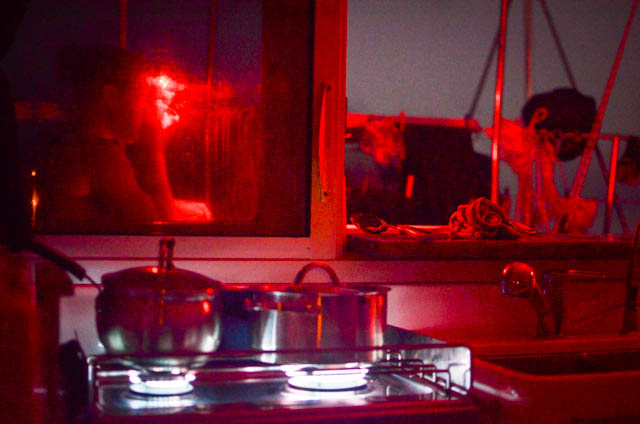
Went to bed anticipating our landfall in Makemo the following morning. Looks like we might be slower than we calculated, missing the slack tide we hoped to hit in Makemo’s south pass, but plenty of time to figure that out when we arrive. Worrying about speed while traveling by sail is pretty wasted emotion.



